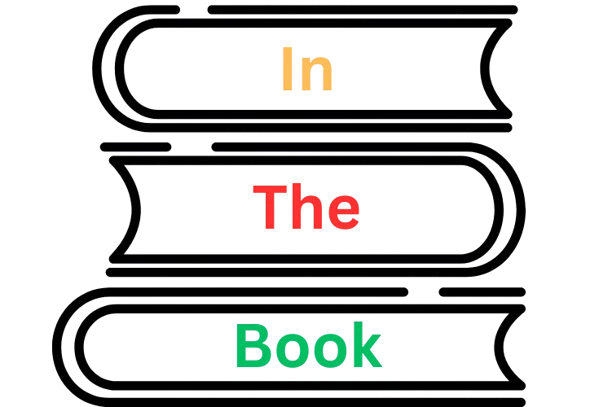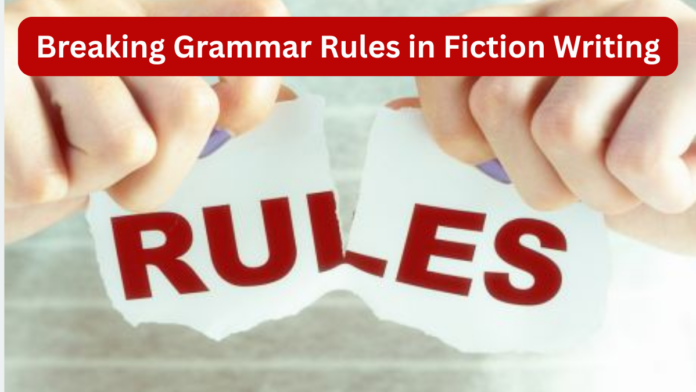Let’s face it—mastering grammar can feel like trying to solve a Rubik’s Cube blindfolded. But do you know what’s even more challenging? Learning when not to follow the rules.
In fiction writing, breaking grammar rules isn’t about being rebellious for the sake of it—it’s about using language with purpose to breathe life into your characters and your story.
So, how do you know which rules are meant to be bent (or broken) and which ones should remain untouched? Let’s dive into the creative world of grammar with insights from experts—and a few tricks up our sleeves.
Contents
- Descriptive Grammar: The New Era of Flexibility
- Recent Developments in Descriptive Grammar
- Character Dialogue: Where Grammar Rules Get Loosened Up
- Why You Can Break Grammar in Dialogue:
- The Art of Sentence Fragments
- Bad Example (Too Fragmented):
- Better Version:
- Punctuation: Use It Before You Abuse It
- Don’t Break These Until You’ve Mastered Them:
- Final Thoughts:
- Key Takeaways:
- FAQs
- 1. Is it okay to use sentence fragments in fiction writing?
- 2. Can I write dialogue that’s grammatically incorrect?
- 3. How do I know if I’m breaking a grammar rule the right way?
- 4. Should I still learn traditional grammar rules if I plan to break them?
Descriptive Grammar: The New Era of Flexibility
Forget the rigid, old-school grammar textbooks—today’s fiction writers are embracing descriptive grammar, which reflects how people actually speak and write in real life.
Here are a few key updates every writer should know:
Recent Developments in Descriptive Grammar
| Development | What It Means for Writers |
|---|---|
| Linguistic Diversity | Encourages writers to use dialects, slang, and nonstandard grammar to reflect authentic voices and cultural backgrounds. |
| Digital Analysis Tools | Software like corpus linguistics databases helps analyze patterns in language use—perfect for character development or voice consistency. |
| Interdisciplinary Influence | Grammar now blends with psychology, education, and communication studies—offering richer insights into how language impacts behavior and perception. |
| Ongoing Research and Application | New theories are being published all the time—keeping writers on their toes about syntax, discourse, and evolving language norms. |
💬 Pro tip: Use descriptive grammar to make your writing relatable, not robotic.
Character Dialogue: Where Grammar Rules Get Loosened Up
If there’s one area where you can toss the rulebook out the window (well, mostly), it’s in your characters’ dialogue.
Why You Can Break Grammar in Dialogue:
-
Characters don’t speak in perfect grammar, and neither should their dialogue.
-
Slang, contractions, and fragments make speech more natural.
-
First-person narration also benefits from casual language.
Let’s take an example:
“I dunno, Mom. It’s not like I meant to mess it up. I just… I panicked, okay?”
Would it be grammatically correct in an essay? No. Is it perfect for a teenager under pressure? Absolutely.
Acceptable Grammar Flex in Dialogue:
-
Colloquialisms
-
Sentence fragments
-
Ending with prepositions
-
Stuttering or pauses with ellipses
But remember—casual doesn’t mean careless. Punctuation still matters.
The Art of Sentence Fragments
Sentence fragments are like seasoning—great in small amounts, overpowering if overused.
Bad Example (Too Fragmented):
The wind on her cheeks. Firewood burning. Smells. Sights. Her past. Her future. Gone.
Too many fragments in a row can confuse or fatigue readers.
Better Version:
The wind on her cheeks, firewood burning… all the smells, sights, and sounds of her life seemed to come together at once. She once had a past, she thought—maybe she even had a future. And now? Nothing. Like her—just gone.
Goal: Use fragments sparingly and purposefully. They should add emotion, not replace structure.
Punctuation: Use It Before You Abuse It
Before you start dropping punctuation marks like paint on a canvas, make sure you really understand what each one does.
Don’t Break These Until You’ve Mastered Them:
-
Commas: Not just for breaths!
-
Semicolons and colons: Not interchangeable.
-
Periods and dashes: Can shape tone and pacing when used thoughtfully.
Let’s look at a high-emotion scene where punctuation is intentionally chaotic:
Oh God what have I done where is he my son please God I can’t have lost him oh God I lost him I lost him I lost him.
The lack of punctuation mirrors the character’s panic—clever, right? But, only use this technique when it enhances the reader’s understanding, not when it makes things messy.
Final Thoughts:
Learning grammar is like learning the rules of chess. You master the moves so you can strategically bend them to win. Fiction writing is no different.
Key Takeaways:
-
Descriptive grammar reflects real language.
-
Dialogue should sound like real people talking.
-
Fragments and punctuation can express emotion—but use them wisely.
-
Breaking grammar rules works best when done with intention and skill.
So go ahead—experiment. Play. Test. Just make sure your reader is always in on the fun.
FAQs
1. Is it okay to use sentence fragments in fiction writing?
Yes, but use them with purpose. They can convey emotion, urgency, or character voice—but overuse may confuse your reader.
2. Can I write dialogue that’s grammatically incorrect?
Absolutely. Dialogue should reflect how people actually speak, not how textbooks say they should.
3. How do I know if I’m breaking a grammar rule the right way?
Ask yourself if it enhances the story, voice, or emotional tone. If the answer is yes—and it’s clear to your reader—you’re on the right track.
4. Should I still learn traditional grammar rules if I plan to break them?
Definitely! You need to understand grammar first in order to break it effectively and with intent.
Click here to learn more

Chandler is an avid automobile enthusiast who is passionate about all things on wheels. From the latest car models to classic vintage rides, I love exploring the automotive world’s intricate details and engineering marvels. With years of experience in test-driving, reviewing, and analyzing cars, I provide readers with comprehensive insights and honest opinions.



























